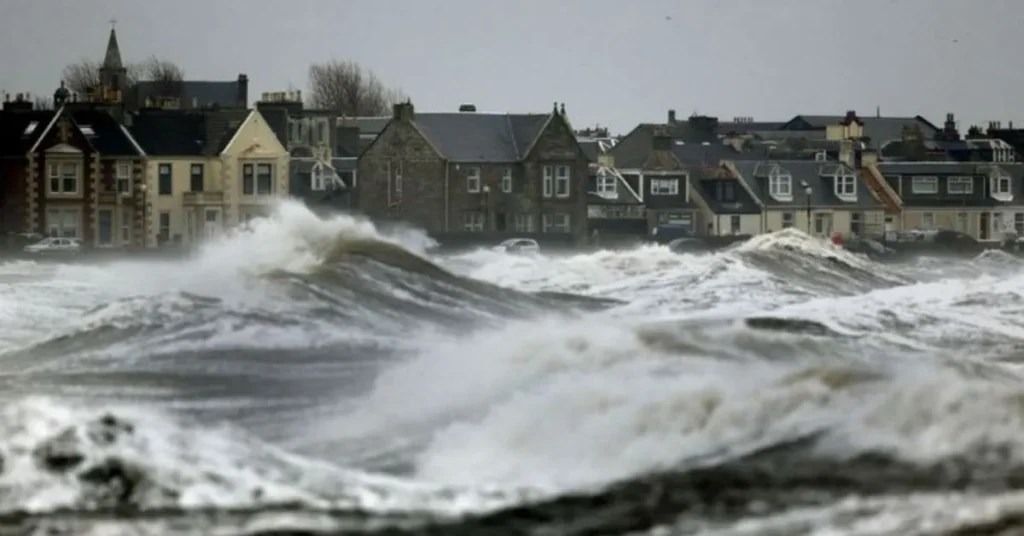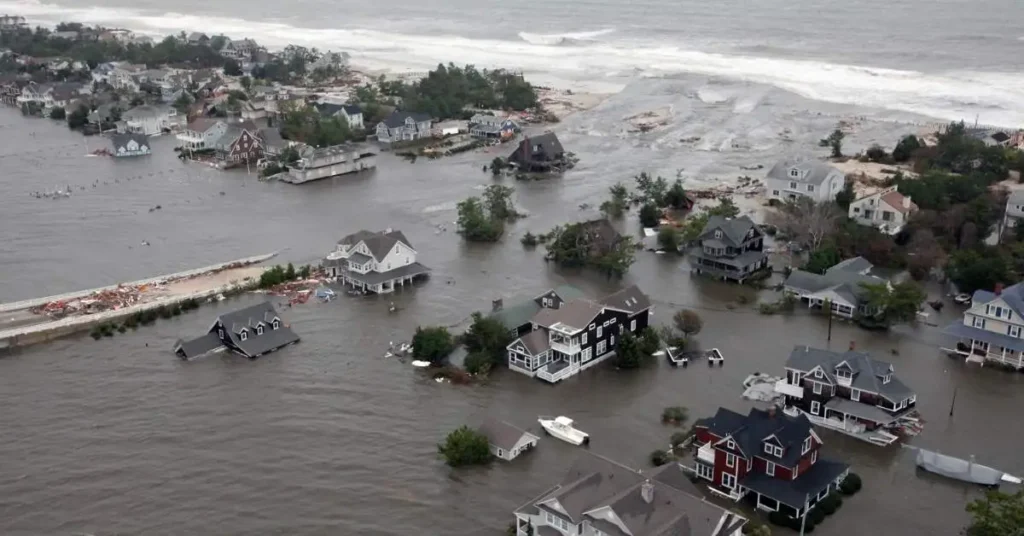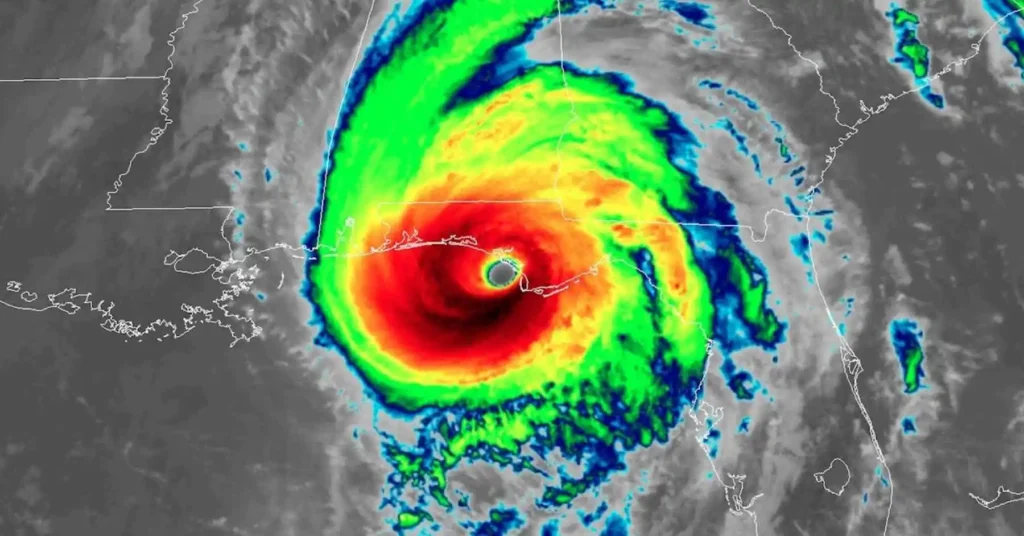Ever wondered why your beachfront dream might turn into a nightmare? Coastal flood warnings are no joke. They’re the alarm bells that could save your life and property. But what exactly are they, and why should you care?
Let’s dive into the world of rising tides and stormy seas, breaking down what these warnings mean for you and your community.
What is a Coastal Flood Warning?
Picture this: You’re chilling at your favorite beach spot when suddenly, alerts start blaring on your phone. That’s a Costera flood warning in action.
National weather services and civil defense agencies issue these alerts when sea water levels are about to go rogue. It’s their way of saying, “Hey, the ocean’s coming for a visit, and it’s not bringing snacks.”
These warnings aren’t just about water creeping up the shore. They’re a heads-up about potential danger from storm surges, extreme tides, and even those sneaky rip currents that can turn a swim into a scary situation.
Causes of Coastal Flooding
So, what makes the sea decide to crash your beach party? It’s not just one thing – it’s a perfect storm of factors.
Storms and hurricanes are the usual suspects. These weather bullies push water towards the shore, creating those infamous storm surges. When a tropical storm meets high tide, it’s like adding fuel to a watery fire.
But let’s not forget about climate change. As our planet warms up, sea levels are rising, making every flood a bit worse than the last. It’s like the ocean’s slowly but surely claiming more real estate.
And then there are those extreme tides. Ever heard of a spring tide? It’s not as cheerful as it sounds. These super-high tides can turn a normal day into a flood event, especially if they team up with a storm.
Areas Vulnerable to Coastal Flooding
Think all coastlines are created equal when it comes to flooding? Think again.
Low-lying areas are like sitting ducks. Places like the Maldives or parts of Florida are always on high alert. It doesn’t take much for water to start creeping into streets and homes.
River deltas are also in the danger zone. When rivers meet the sea, it’s a recipe for flooding. Just ask folks living near the Mekong Delta.
And let’s not forget about our urban coastal areas. Cities like Miami or New York are constantly playing defense against the rising tides. It’s not just about wet feet – we’re talking billions in potential damage.
Impacts of Coastal Flooding

When the sea decides to pay an unexpected visit, it doesn’t just leave a few puddles behind. The impacts can be devastating and long-lasting.
Loss of Property and Infrastructure
Imagine coming home to find your living room’s turned into an aquarium. Coastal flooding doesn’t just dampen your carpet – it can destroy entire neighborhoods.
Roads turn into rivers, bridges get battered, and power grids go dark. It’s not just inconvenient; it’s a major hit to the wallet for both homeowners and local governments.
Population Displacement
When the water rises, people have to move – fast. Evacuation orders can turn communities into ghost towns overnight.
But here’s the kicker: sometimes, the water doesn’t just go away. Repeated flooding can make areas uninhabitable, forcing people to say goodbye to their homes for good.
Impact on Ecosystems
It’s not just humans who suffer. Coastal ecosystems take a beating too.
Saltwater barges into freshwater habitats, messing with the delicate balance of life. Mangroves and coral reefs, nature’s own flood barriers, can get damaged or destroyed.
These ecosystems are like nature’s superheroes, protecting our coasts. When they’re down for the count, we all feel the impact.
Water Pollution
Floods don’t just bring water; they bring a cocktail of contaminants.
Sewage systems overflow, industrial waste gets swept up, and suddenly, finding clean water becomes a major challenge. It’s a recipe for waterborne diseases that can linger long after the flood waters recede.
Coastal Flood Preparedness
So, how do you avoid becoming a statistic in the next coastal flood? It’s all about being prepared.
First things first: stay informed. Keep those weather alerts on and pay attention when the experts start talking about storm surges or high tides.
Have an evacuation plan ready. Know your route, have a go-bag packed, and make sure everyone in your family knows the drill.
If you’re in a flood-prone area, consider flood-proofing your home. It might seem like a hassle now, but it could save you a world of trouble later.
And please, when the warnings come, take them seriously. No sunset is worth risking your life over.
The Science Behind Flood Predictions
Ever wonder how meteorologists know when to sound the alarm? It’s not just guesswork – there’s some serious science behind those predictions.
Weather services use a combination of satellite data, ocean buoys, and complex computer models to forecast potential flooding. They’re looking at everything from wind speeds to atmospheric pressure.
These predictions are getting better all the time, thanks to advances in technology. But they’re not perfect – that’s why it’s always better to err on the side of caution.
Climate Change and Coastal Flooding

Let’s face it: coastal flooding isn’t just a “now and then” problem anymore. Climate change is turning it into a regular headache for coastal communities.
As global temperatures rise, ice caps melt, and sea levels creep up. It’s like giving coastal floods a head start before they even begin.
This isn’t just about more frequent floods. It’s about more intense floods, reaching areas that used to be considered safe.
Economic Impact of Coastal Flooding
When the waters rise, so do the costs. Coastal flooding isn’t just a natural disaster – it’s an economic one too.
We’re talking billions in damage to property and infrastructure. But it doesn’t stop there. Businesses close, tourism takes a hit, and entire local economies can be disrupted.
Insurance companies are feeling the heat too. As floods become more common, they’re having to rethink how they handle coastal properties.
Building Resilient Coastal Communities
So, what’s the long-term solution? It’s all about building resilience.
Some communities are getting creative with flood defenses. From building artificial reefs to creating “sponge cities” that can absorb excess water, there’s no shortage of innovative ideas.
But it’s not just about physical barriers. It’s about smart urban planning, stricter building codes, and sometimes, making the tough decision to retreat from the most vulnerable areas.
The Role of Technology in Flood Warning Systems
Technology is changing the game when it comes to flood warnings.
Imagine getting a personalized alert on your phone, telling you exactly when and where flooding is likely to hit your area. That’s the power of modern flood warning systems.
From AI-powered prediction models to crowd-sourced flood mapping, tech is making it easier than ever to stay one step ahead of the rising waters.
Future Challenges and Innovations
As we look to the future, coastal communities face a mix of challenges and opportunities.
Advances in predictive modeling and early warning systems offer hope for more accurate and timely alerts. Imagine AI-powered systems that can predict flooding down to the street level.
But we’re also facing new challenges. As coastal populations grow and climate change accelerates, we’re in a race against time to adapt our infrastructure and planning.
Education and Awareness: The Key to Long-term Safety

At the end of the day, the most powerful tool against coastal flooding is knowledge.
Incorporating flood awareness into school curriculums can create a generation that’s flood-savvy from the start. It’s not just about science class – it’s about creating informed citizens.
Public awareness campaigns, especially those tailored to local contexts, can transform how communities respond to flood warnings. It’s about turning information into action.
Read More on Kickyreport
FAQ’s
How long do I have to evacuate after a coastal flood warning?
Act fast. You may have hours, not days. Follow local authority instructions. Don’t wait until the last minute. Leaving early is always safer.
What should I pack in my flood emergency kit?
Pack essentials only. Include water and non-perishable food. Add flashlights and batteries. Pack medications and first-aid supplies. Bring important documents in waterproof containers. Don’t forget cash and a portable phone charger.
Is my house safe if it’s never flooded before?
Past safety doesn’t guarantee future safety. Climate change is altering flood patterns. New development can change water flow. Always heed current warnings. Stay prepared, regardless of history.
Conclusion: Staying Afloat in Uncertain Times
Coastal flood warnings are more than just alerts – they’re lifelines. In a world where our relationship with the coast is changing, understanding and respecting these warnings is crucial.
Remember, knowledge is power. Stay informed, stay prepared, and when in doubt, head for higher ground. The ocean’s beautiful, but it demands respect.
By working together, staying alert, and adapting to our changing environment, we can build safer, more resilient coastal communities. After all, we’re all in this rising tide together.

I manage KickyReport.com, a news-driven platform where I deliver timely updates. My focus is on keeping readers informed about the latest events and trends.
